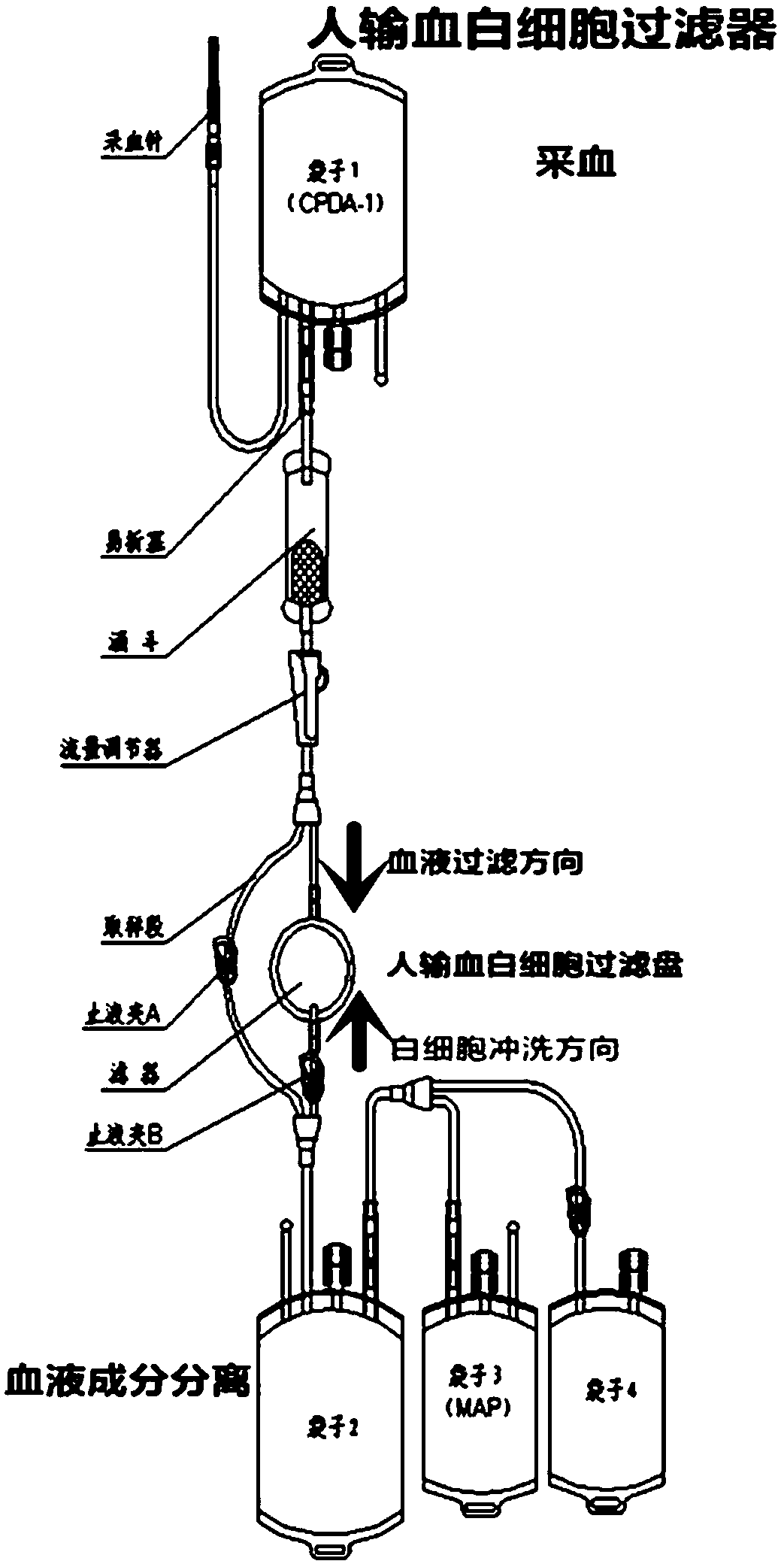Method for extracting neutrophil azurophilic granules from human blood transfusion waste
A neutrophil and waste technology, applied in the field of medical clinical testing, can solve problems such as being only suitable for scientific research, difficult to popularize in industrialization, and not suitable for medical clinical research and in vitro diagnosis of diseases.
- Summary
- Abstract
- Description
- Claims
- Application Information
AI Technical Summary
Problems solved by technology
Method used
Image
Examples
Embodiment 1
[0034] In this embodiment, a total of 630 white blood cell filters recovered from the central blood bank were used. After the blood cell mixture is obtained by primary elution, the red blood cells in the mixture are removed by lysing the red blood cells, and the leukocyte enrichment precipitate is obtained by centrifugation and washing, and then the leukocyte lysate obtained by cracking the leukocyte enrichment precipitate through a nitrogen booster device is finally added to it. Density gradient separation of the bioparticle solvent followed by centrifugation to obtain 33.2 g of neutrophil azurophilic granule tissue precipitate. The specific implementation steps are as follows:
[0035] 1. The raw material for obtaining neutrophil azurophilic granules comes from human blood transfusion leukocyte filter. This filter belongs to the discarded medical supplies after human blood transfusion. The human blood leukocyte filter is required to be stored in an environment of 4°C-8°C u...
Embodiment 2
[0046] In this embodiment, the composition of the azurophilic granulosa cell tissue precipitate layer extracted in Example 1 is analyzed and verified, and the verification process is as follows: grind and dissolve 0.1 g of the azurophilic granule cell tissue precipitate layer separated and extracted in Example 1, and After the grinding is uniform, the analysis and verification of the components of the cell grinding solution is carried out. The verification method is polyacrylamide gel electrophoresis (SDS-PAGE), stained with Coomassie blue, and then analyzed with ChemiDoc MP imager of BioRad to analyze the results of electrophoresis gel. Test results such as figure 1 As shown, according to the molecular weight of proteinase 3 (PR3) (29-33kD), the molecular weight of myeloperoxidase (MPO) (59kD) and the molecular weight of bacterial permeability factor (BPI) (55kD), it can be obtained from figure 1 The results of the protein glue deduced that the grinding solution of neutrophi...
Embodiment 3
[0048] This example further qualitatively verifies the results obtained from the protein gel analysis in Example 2. The verification method is protein glue transfer and Western Blotting. The primary antibodies used are rabbit polyclonal anti-MPO antibody (1:1000, Jackson) and rabbit polyclonal anti-PR3 antibody (1:300, Jackson). Test results such as figure 2 shown, from figure 2 It can be clearly seen that the grinding solution of neutrophil azurophilic granules contains at least the two protein antigens of MPO and PR3, which proves that it can be used as the starting protein solution raw material for the purification of MPO and PR3 antigens.
PUM
 Login to View More
Login to View More Abstract
Description
Claims
Application Information
 Login to View More
Login to View More - R&D
- Intellectual Property
- Life Sciences
- Materials
- Tech Scout
- Unparalleled Data Quality
- Higher Quality Content
- 60% Fewer Hallucinations
Browse by: Latest US Patents, China's latest patents, Technical Efficacy Thesaurus, Application Domain, Technology Topic, Popular Technical Reports.
© 2025 PatSnap. All rights reserved.Legal|Privacy policy|Modern Slavery Act Transparency Statement|Sitemap|About US| Contact US: help@patsnap.com



